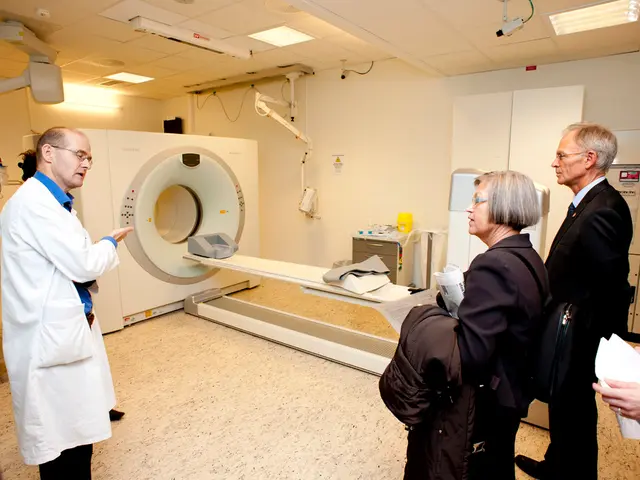Exploring therapies for C3 Glomerulopathy (C3G) disease: An overview of management strategies
In the realm of kidney ailments, C3 glomerulopathy (C3G) is a rare yet notorious condition affecting about 2 to 3 people per million. This sneaky condition leads to a buildup of protein deposits in the kidney's filtering tissues, eventually impairing their function and potentially causing kidney failure over time.
Current treatments for C3G focus on supporting kidney health and suppressing the immune system, as there is no known cure. As you might expect, emerging therapies aim to interrupt the proteins responsible for C3G's disease activity, offering a glimmer of hope for those dealing with this condition.
C3G happens when a portion of the immune system goes rogue, with certain genes causing overactive immune responses. This leads to an excess of C3 protein, which forms deposits in the kidney that damage the glomeruli—the blood vessels responsible for filtering waste and extra fluid out of the blood. Some people with C3G also carry antibodies that impair the complement system's regular function.
In an attempt to slow down kidney damage, doctors prescribe supportive interventions, including Angiotensin converting enzyme (ACE) inhibitors and Angiotensin receptor blockers (ARBs) to lower blood pressure and prevent proteinuria. Mycophenolate mofetil (MMF) and glucocorticoids, both immune-suppressing medications, are also recommended if kidney function has declined for at least six months or if other markers of C3G progression are present.
Looking ahead, complement inhibitors, a type of medication that stops complement system activity, are under consideration as a treatment for C3G. These medications could be suggested if immunosuppressant medications prove ineffective. Some promising agents in development target different proteins in the complement cascade, including iptacopan, pegcetacoplan, ARO-C3, danicopan, avacopan, KP104, and narsoplimab.
The recent FDA approval of iptacopan, an oral inhibitor of the alternative complement pathway, marks a remarkable step forward in the fight against C3G. This treatment addresses the underlying cause rather than just managing symptoms, offering renewed hope for those battling this challenging condition. Furthermore, other agents in development show promise in targeting multiple proteins responsible for C3G's disease activity, potentially leading to more effective and specific treatment options in the future.
- C3 glomerulopathy (C3G) is a dryly named, yet severely problematic medical-condition affecting approximately 2 to 3 individuals per million, primarily categorized under chronic-diseases.
- In kidney disease context, C3G leads to an uncategorized buildup of protein deposits in the kidney's filtering tissues, eventually compromising their function and potentially resulting in kidney failure.
- Science has identified glomerulopathy as a result of certain genes causing overactive immune responses in the immune system, which, in turn, generates an excess of C3 protein, leading to kidney damage.
- Immunosuppressive therapies and treatments, such as Angiotensin converting enzyme (ACE) inhibitors, Angiotensin receptor blockers (ARBs), Mycophenolate mofetil (MMF), and glucocorticoids, are used to slow down kidney damage caused by C3G.
- Moreover, these therapies partly focus on lowering blood pressure, preventing proteinuria, and suppressing the immune system to provide some relief for C3G patients.
- The emergence of complement inhibitors, a category of medication intended to halt complement system activity, offers a potential solution for C3G patients experiencing ineffectiveness with conventional immunosuppressant medications.
- Several promising agents in development—like iptacopan, pegcetacoplan, ARO-C3, danicopan, avacopan, KP104, and narsoplimab—target various proteins in the complement cascade, leading to the hope of more effective and specific treatment options for C3G.
- Notably, the Food and Drug Administration (FDA) has granted approval for iptacopan, an oral inhibitor, to address the root cause, rather than just the symptoms, of C3G, encouraging renewed optimism among affected individuals.
- C3G also contributes to health-and-wellness concerns outside the kidneys, with its accompanying proteins potentially contributing to other medical-conditions such as respiratory-conditions, digestive-health issues, eye-health complications, hearing problems, and eventual risks for cancer.
- Progress in understanding and targeted treatments for C3G highlights the ongoing importance of continued research in immunosuppressive therapies, neurological-disorders, skin-conditions, cardiovascular-health, and autoimmune-disorders, striving to better manage and prevent chronic-diseases.








